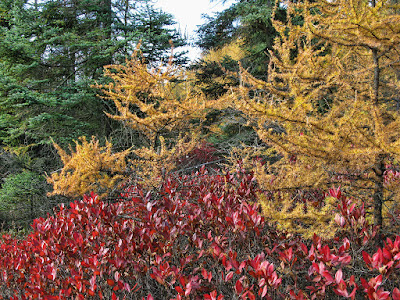In April, I received a letter informing me that one of our two street trees was going to be cut down. I’ve been wanting to get rid of this tree for years. It was a Norway maple (Acer platanoides) that had been losing branches over the years, until all that was left was a large limb angling toward the house.
 | |
| The doomed Norway maple in May |
We’re on the side of the street with the power lines, so over the years the utility company has been hacking away at this tree and its partner at the other end of our street frontage. A few years ago, I asked the city to inspect the tree because I thought it was liable to drop a heavy branch on a pedestrian or a parked car. At that time, they found it was still sound. Now, the letter said, it had “significant defects.”
 |
| Marked to be cut down |
The reason I resented this tree wasn’t just its species. Yes, I dislike Norway maples for their fecundity and voracious shallow roots. This tree also cast dense shade over the front yard. It had limited what I could grow under its branches to the standard broadleaf evergreens you see everywhere in the neighborhood. A couple of years ago I added an oakleaf hydrangea (Hydrangea quercifolia) that livened things up a little, but still.
 |
| Ho hum boxwood, Japanese pieris, and mountain laurel |
One morning last week, two trucks arrived, and the urban forestry team took down the tree. I darted in and out of the house taking pictures to document the big event.
 |
| Avoiding wires to saw off chunks |
A bucket truck allowed a man with a chain saw to maneuver around the wires and cut the tree apart piece by piece. Another man operated a giant arm picking up large branches to haul back to the city yard for chipping.
 |
| Future wood chip mulch |
After half an hour, all that was left was the newly cut stump.
 |
| Its center was hollow |
I had six weeks to anticipate it, but this event caught me off balance. I wasn’t prepared to be sad to see the Norway maple go. Although I’d wanted it gone, seeing it chopped up so fast reminded me of how it had stood there patiently through blizzards, hurricanes, droughts, and nonnative insect attacks. The tree was misshapen at the end, but that comes to all who live to old age.
 |
| Blueberry foliage turns red in fall |
Unlike privet, though, they’re natives and not invasive. It would be a friendly gesture toward both birds and walkers to offer blueberries along the sidewalk.
 |
| Neighbors could pick blueberries as they passed |
When it’s too hot to work outside this summer, I’ll consider what else I could plant in the new sunny clearing this fall.
No comments:
Post a Comment